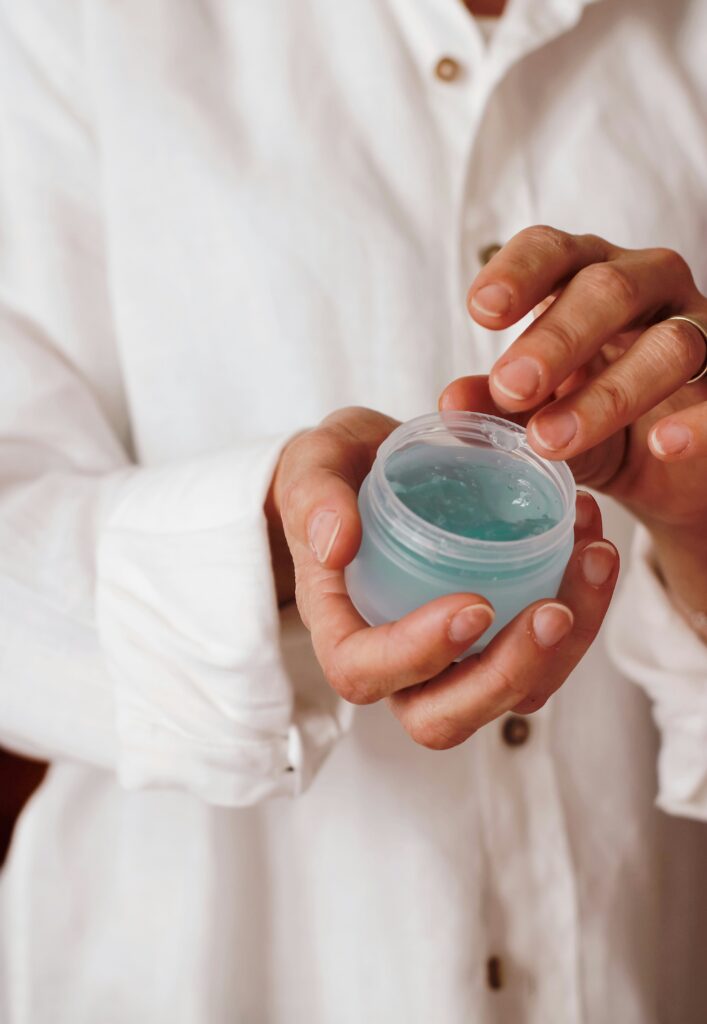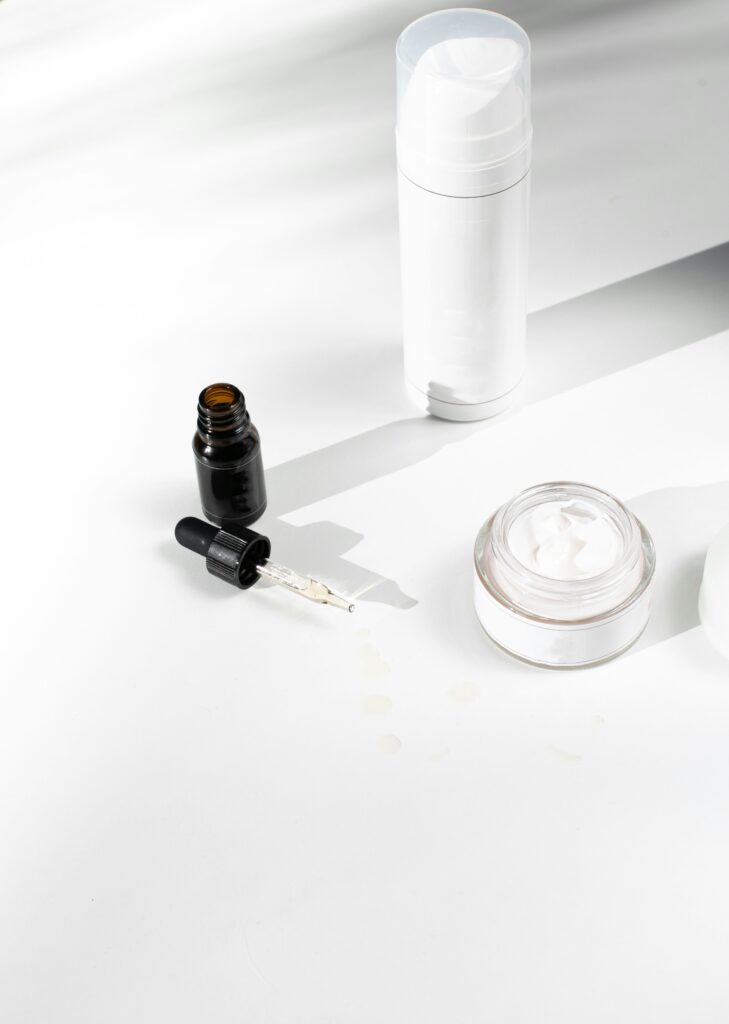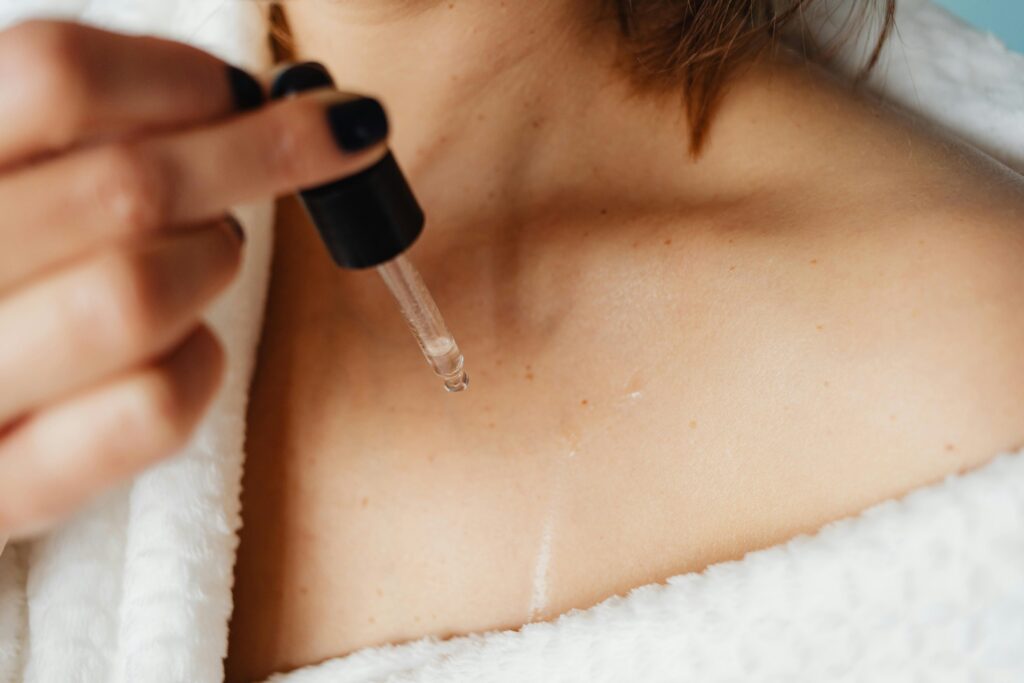The Secret to Plump, Youthful Skin
Have you ever felt like your skin lacks that plump, dewy glow no matter how much moisturizer you apply? You’re not alone. The answer may lie with Hyaluronic acid (HA), a molecule often hailed as the ultimate hydration booster. However, not all HA skincare products are created equal. To truly unlock its potential, understanding how it works, its molecular weight variations and formulation strategies is key.
Let’s break down the science behind hyaluronic acid and see if it lives up to its skincare “holy grail” reputation.

What is Hyaluronic Acid?
Hyaluronic acid (HA) is a naturally occurring glycosaminoglycan found in the skin, joints, and connective tissues. Its primary function? Attracting and retaining moisture, ensuring optimal hydration, elasticity, and lubrication.
However, as we age, our natural HA levels decline, leading to dehydration, loss of elasticity, and fine lines. To combat this, the skincare industry has developed a range of HA formulations—from topical serums and moisturizers to injectable fillers—all designed to restore hydration and improve skin health.
HA is unique because its hydration ability is dependent on environmental humidity. In humid conditions, it draws moisture from the air into the skin. However, in dry climates, without an occlusive ingredient, HA may pull water from deeper skin layers, potentially leading to increased dehydration over time.

The key to maximizing HA’s benefits?
Pairing it with a well-formulated moisturizer containing occlusives like ceramides, squalane, or fatty acids to lock in hydration.
The Science Behind Hyaluronic Acid’s Skincare Benefits
1. Multi-Layer Hydration & Moisture Retention
Think of multi-molecular HA as a hydration pyramid:
- High molecular weight HA (HMWHA) forms a protective barrier on the surface, reducing transepidermal water loss (TEWL) and instantly smoothing fine lines.
- Low molecular weight HA (LMWHA) penetrates deeper, delivering moisture beneath the skin’s surface and boosting elasticity.
- Oligo HA (ultra-low molecular weight) stimulates skin regeneration and barrier repair.
Studies show that combining multiple molecular weights of HA is far more effective than using a single weight, as each layer works together to provide immediate and long-lasting hydration.
Pro Tip: Always apply HA serums on damp skin to maximize absorption and follow with an occlusive moisturizer to seal in hydration.
2. Anti-Aging & Skin Plumping Effects
HA is a key player in anti-aging skincare due to its ability to temporarily fill fine lines and improve skin elasticity. The immediate plumping effect occurs because HA acts like a sponge, binding water molecules within the skin’s structure. However, for long-term benefits, multi-molecular HA combined with supportive ingredients like peptides and ceramides is crucial.
Certain HA derivatives, such as acetylated HA, are formulated for longer hydration retention and better resistance to enzymatic breakdown, making them ideal for anti-aging formulations.
Formulation Insight: HA serums that contain only high-molecular-weight HA ( shown on the label as Sodium Hyaluronate, Hyaluronic Acid, or Sodium Hyaluronate Crosspolymer) may provide an instant smoothing effect but lack deep hydration benefits. For best results, opt for products with multi-weight HA complexes (often labelled as Oligo Hyaluronic Acid, SMW Sodium Hyaluronate, Hydrolyzed Hyaluronic Acid, Hydrolyzed Sodium Hyaluronate).
Dr Bozica
3. Barrier Repair & Wound Healing Properties
Beyond hydration, HA plays a crucial role in skin healing and inflammation reduction. It promotes fibroblast (collagen-producing cells) activity, accelerating tissue repair and recovery from environmental stressors, over-exfoliation, or cosmetic procedures.
- Oligo HA has been shown to stimulate skin renewal, making it an excellent ingredient in post-procedure or barrier-repairing formulations.
- Dermatologists often recommend HA-based creams for post-laser treatments, sunburn recovery, and soothing sensitive skin.

Did You Know?
HA’s wound-healing properties make it a go-to ingredient for compromised skin, but the key is choosing the right molecular weight for your specific skin needs.
How to Choose the Best Hyaluronic Acid Skincare Products
Not all HA formulations are created equal, and choosing the right product can make a significant difference in your skincare results. Here’s what to look for:
1. Multi-Molecular Weight HA for Layered Hydration
For optimal hydration, look for products containing a blend of high, low, and ultra-low molecular weight HA. This ensures both surface-level moisture retention and deep hydration.
✅ Best for: Long-lasting hydration, anti-aging, and skin barrier repair.
❌ Avoid single-weight HA formulations if you’re looking for deeper hydration benefits.
2. Supporting Ingredients for Hydration Synergy
Hyaluronic acid works best when paired with barrier-supporting ingredients:
- Ceramides & Fatty Acids: Strengthen the skin’s natural barrier to lock in hydration.
- Glycerin & Polyglutamic Acid: Enhance water retention and hydration longevity.
- Peptides & Niacinamide: Support collagen production and improve skin elasticity.
✅ Best for: Maximizing hydration and reinforcing the skin’s defense against moisture loss.
❌ Avoid HA products with alcohol-based or overly fragranced formulas, which can counteract its hydrating benefits.
3. Proper Formulation to Prevent Dehydration
Hyaluronic acid’s effectiveness depends on its environment. If HA is applied in a dry climate without an occlusive moisturizer, it can draw moisture from deeper skin layers instead of the air, leading to dehydration.
Solution: Always follow HA application with a moisturizer containing occlusive agents like squalane, shea butter, or Vaseline to seal hydration in the skin.
Common Myths About Hyaluronic Acid – Debunked
Despite its popularity, there are many misconceptions surrounding HA. Let’s separate fact from fiction.
Myth #1: “Hyaluronic Acid Can Over-Hydrate the Skin”
Reality: HA doesn’t over-hydrate, but it needs the right conditions to work effectively. In dry climates, HA alone isn’t enough—it must be paired with an occlusive ingredient to prevent moisture evaporation.
Myth #2: “Higher Concentrations of HA = Better Results”
Reality: More isn’t always better. Studies show that excessively high concentrations of HA can actually be counterproductive, forming a film on the skin’s surface without proper absorption. A well-balanced formulation with complementary ingredients is far more effective.
Myth #3: “Hyaluronic Acid Replaces Moisturizer”
Reality: HA is a humectant, meaning it attracts water but doesn’t seal it in. A moisturizer is essential to lock in hydration and maintain long-term skin health.

Hyaluronic acid is a powerful, science-backed hydration booster, but its effectiveness depends on the formulation, molecular weight distribution, and complementary ingredients.
Final Verdict: Is Hyaluronic Acid Worth the Hype?
Best Practices for Using HA:
1️⃣ Apply on damp skin for better absorption.
2️⃣ Pair with a moisturizer to seal in hydration.
3️⃣ Look for multi-molecular formulations for maximum benefits.
4️⃣ Choose products with skin-strengthening ingredients like ceramides and peptides.
As a cosmetic scientist, I always emphasize that it’s not just about using HA—it’s about using it correctly.
Have you used hyaluronic acid in your skincare routine? What’s your experience? Let’s discuss in the comments!
Talk to you soon!
Dr. Bozica
Reference:
https://www.sciencedirect.com/science/article/pii/S014181301833770X
https://japsonline.com/abstract.php?article_id=3676&sts=2
https://www.mdpi.com/1420-3049/26/15/4429
https://onlinelibrary.wiley.com/doi/full/10.1111/jocd.15555
Can I mix HA with vitamin C in the same routine or better to alternate?
hello! Yes, vit C goes first. Hyaluronic acid may create a layer on top of skin, so it is better to put other actives first
I’ve been layering HA wrong this whole time 😩 didn’t know I had to use it on damp skin AND seal it in. Game changer.